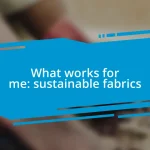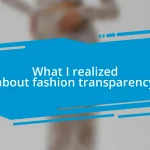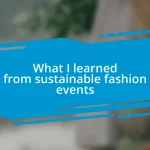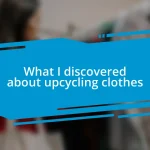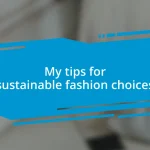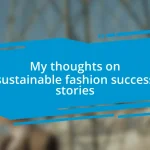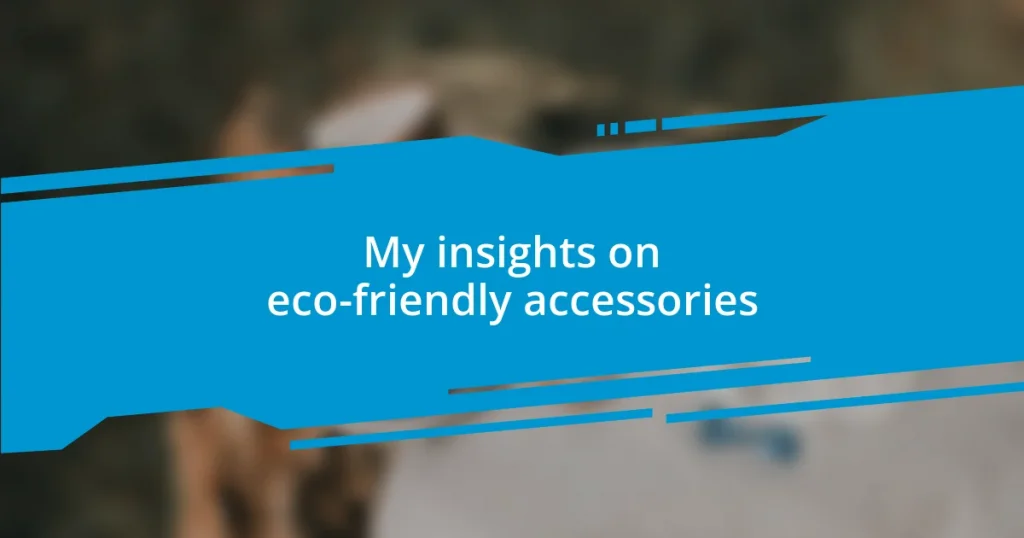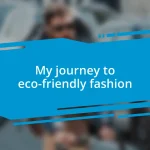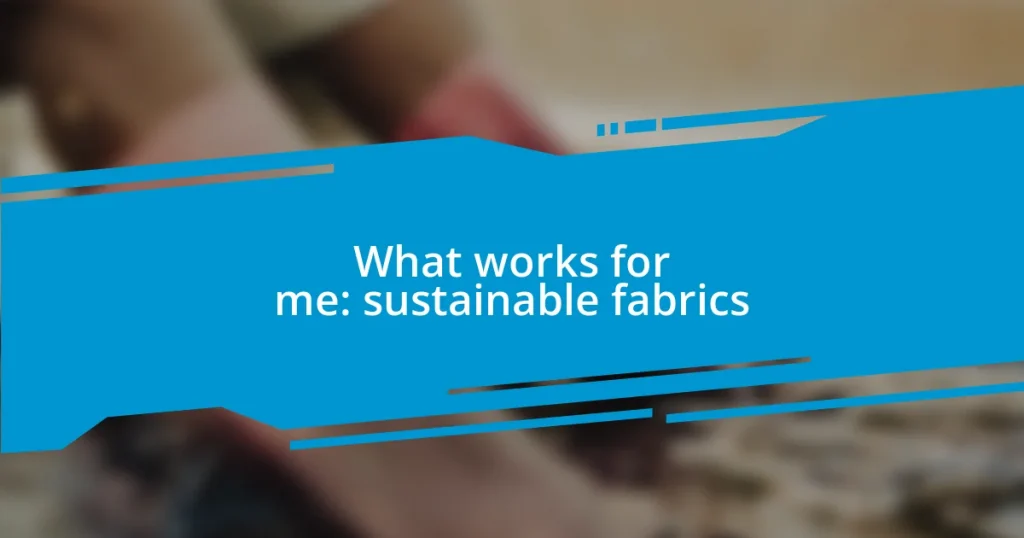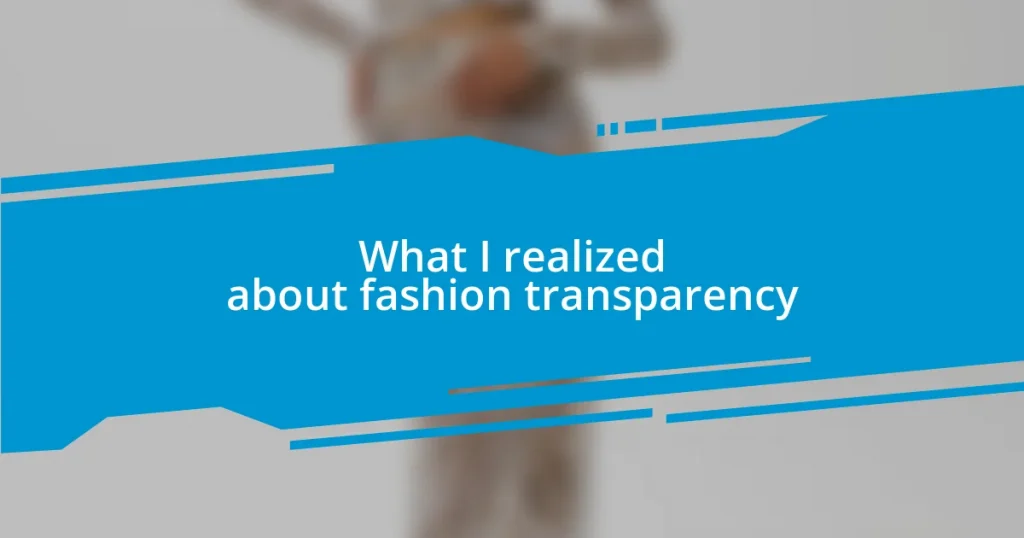Key takeaways:
- Eco-friendly accessories promote sustainable living by reducing waste and supporting ethical manufacturing practices.
- Materials such as bamboo, recycled items, and organic cotton are essential for the sustainability of these accessories, each with unique environmental benefits.
- Caring for eco-friendly accessories extends their life and aligns personal values with responsible consumption, enhancing the connection to the purchased items.
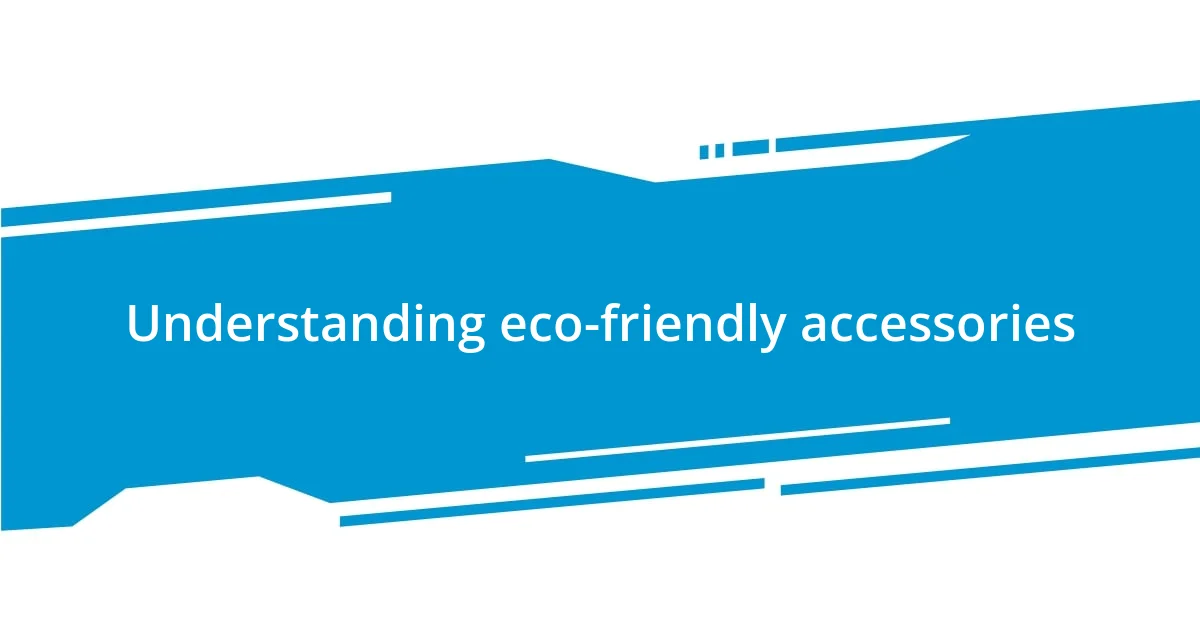
Understanding eco-friendly accessories
Eco-friendly accessories are more than just trendy items; they represent a conscious choice towards sustainable living. I remember the first time I switched to a bamboo toothbrush. At first, it felt like a small change, but it opened my eyes to how even the simplest items can reflect our values and impact the environment. Have you ever considered how much plastic you use daily?
When I started exploring eco-friendly options, I was surprised by the variety available—from bags made of recycled materials to jewelry crafted from repurposed items. Each piece carries a story, often highlighting the craftsmanship and creativity that goes into making sustainable choices. It’s fascinating to think about how these accessories not only serve a purpose but also promote a more compassionate approach to consumption.
Understanding eco-friendly accessories also means recognizing their role in reducing waste and conserving resources. It’s not just about style; it’s about making thoughtful decisions that contribute to a healthier planet. I often find myself wondering how we can shift our mindset to prioritize sustainability—what if every purchase we made reflected our commitment to the Earth?
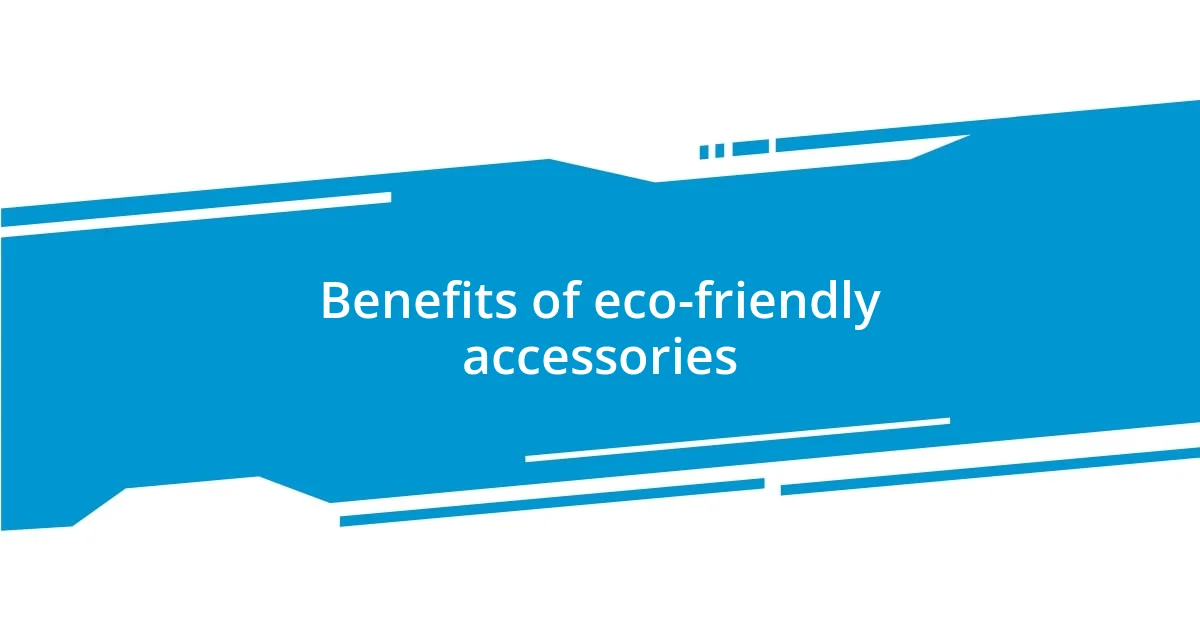
Benefits of eco-friendly accessories
Eco-friendly accessories come with a wealth of benefits that extend far beyond aesthetics. For instance, when I switched to a stylish hemp tote bag, I felt a sense of pride knowing that my choice actively reduced my plastic footprint. It’s not just about choosing an accessory; it’s a step towards changing the narrative of consumption.
In addition to contributing to environmental sustainability, these accessories often support ethical manufacturing practices. I recall purchasing a pair of earrings made from recycled metals, and it gave me immense satisfaction to know I was supporting artisans who prioritize fair labor. This personal connection enhances the value of each piece, reinforcing that every purchase holds power—your choices shape what you value in the world.
Lastly, eco-friendly accessories can lead to long-term savings. For example, investing in a high-quality stainless steel water bottle might seem pricier at first, but it replaces countless single-use plastic bottles over time. When I made that shift, I not only saved money but also felt better about my daily choices. It’s empowering to realize that conscious decisions can positively impact my wallet and the environment.
| Eco-friendly Accessories | Conventional Accessories |
|---|---|
| Support sustainable practices | Often contribute to waste |
| Lasting quality | Usually lower durability |
| Ethically made | Potentially exploitative labor |
| Unique, meaningful designs | Mass-produced items |
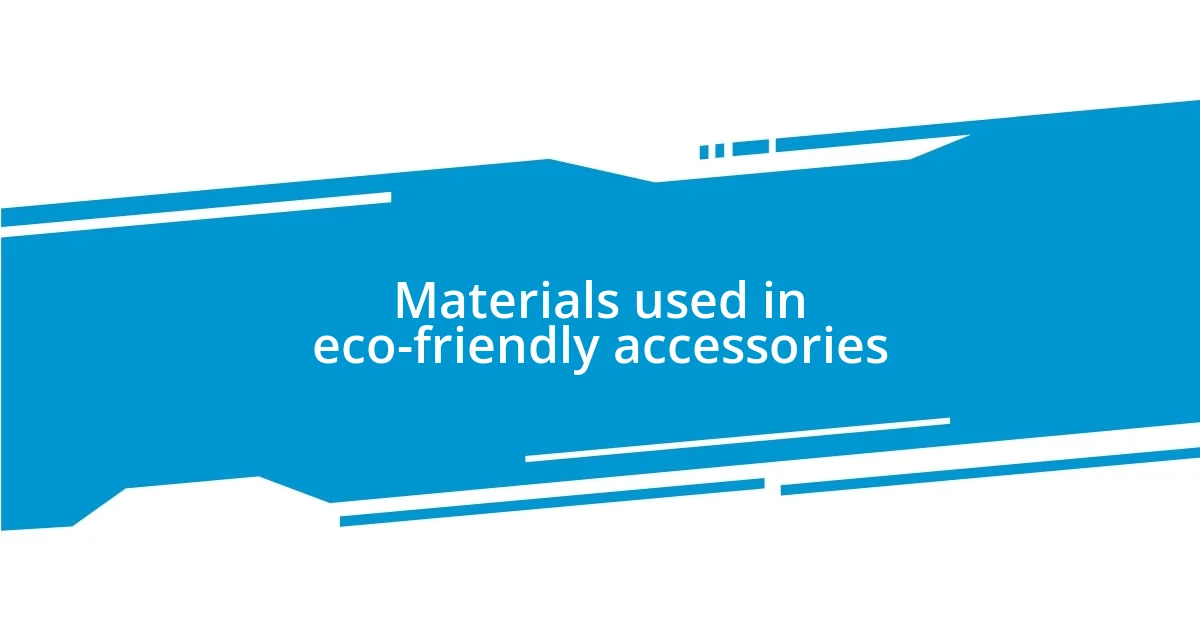
Materials used in eco-friendly accessories
When I started my journey into eco-friendly accessories, I realized that the materials used play a crucial role in their sustainability. Discovering fabrics like organic cotton, which is free from harmful pesticides, made me understand the importance of nurturing the environment from the ground up. Synthetic materials may look sleek, but knowing they can take hundreds of years to decompose truly changed my perspective.
Here are some common materials used in eco-friendly accessories:
- Bamboo: Fast-growing and biodegradable, bamboo is a renewable resource often used in a variety of products, from sunglasses to toothbrushes.
- Recycled materials: Items made from recycled plastics or metals reduce waste and give a second life to materials that would otherwise end up in landfills.
- Hemp: This plant-based material is durable and requires fewer resources to grow compared to conventional cotton.
- Cork: Sourced from the bark of cork trees, it’s sustainable because the tree regenerates after harvest, making it an excellent choice for wallets and bags.
- Organic leather: Produced with minimal chemicals, organic leather offers a more sustainable alternative to traditional leather.
Each of these materials has a unique story, and as I explore more, I find myself identifying not just with the accessory but with the journey it took to get to me. My favorite tote bag, made from recycled ocean plastics, constantly reminds me of the potential for transformation—how waste can evolve into something functional and beautiful. It’s a small but powerful connection that keeps me motivated to make eco-conscious choices every day.
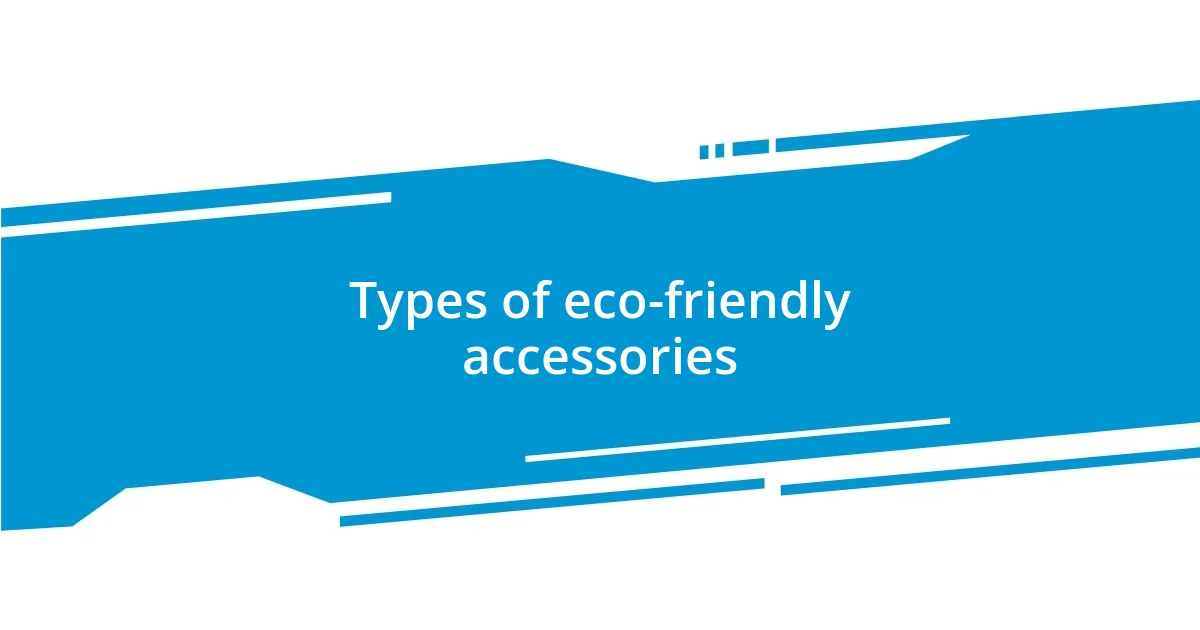
Types of eco-friendly accessories
When I think about the types of eco-friendly accessories available today, my mind instantly goes to bags. Take, for example, my exquisite cork handbag. Not only is it stylish, but I love how its production process doesn’t harm the environment—since cork trees regrow after harvesting, I feel a connection to nature every time I carry it. This kind of accessory is a perfect blend of form and function, and I appreciate knowing it contributes to sustainability.
Jewelry is another area where eco-friendly options shine. I’ve worn rings made from ethically sourced gemstones, and each time I put one on, I can’t help but ponder the story behind its journey to my hand. Knowing that these stones were mined with respect for the land and the people involved adds depth to my appreciation for them. It’s quite remarkable how accessories can carry such weight, both literally and metaphorically.
Then there’s my collection of biodegradable phone cases. Initially, I was skeptical—could something so protective also be good for the planet? But not only do these cases serve their purpose, they decompose in harmony with the earth when disposed of. Each time I notice my case wearing down, I feel a sense of satisfaction knowing that I chose a product that prioritizes sustainability over disposability. Isn’t it refreshing to embrace accessories that align with our values?
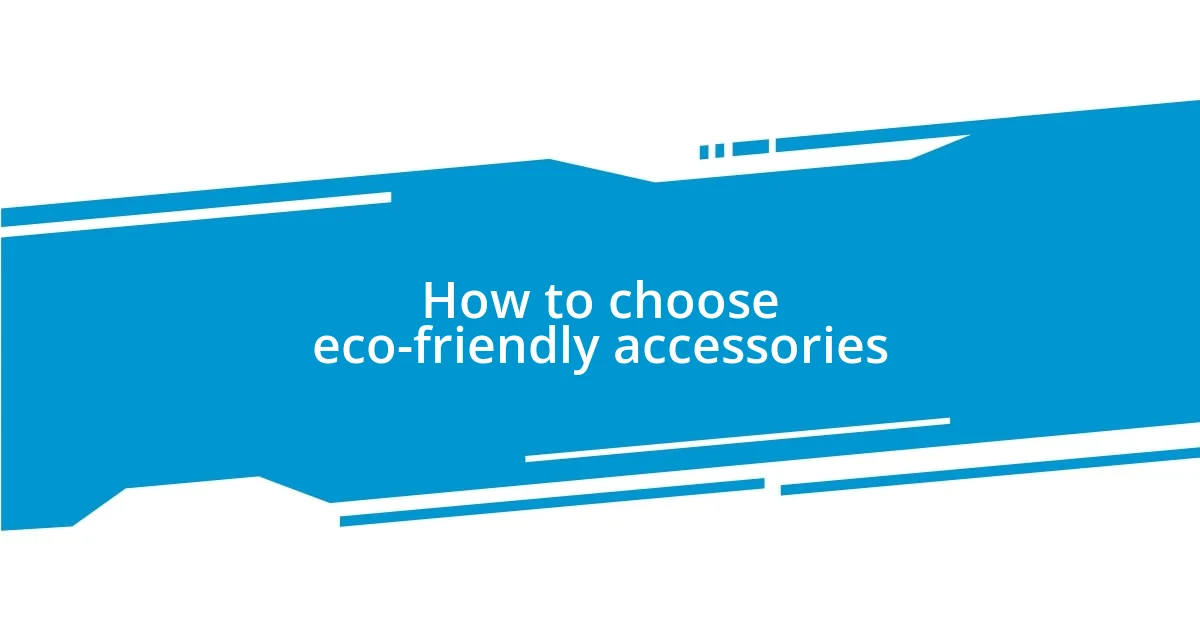
How to choose eco-friendly accessories
When I’m choosing eco-friendly accessories, I always start by scrutinizing the brand’s transparency and practices. I remember one time finding a beautiful pair of earrings only to discover the company had no information on their sourcing. It was a disappointing moment that taught me the importance of looking beyond aesthetics. I’ve found that brands that share their sustainability journey often have a deeper commitment to ethical practices, which makes me feel good about my purchase.
Wearing accessories made from sustainable materials has a unique impact on my mindset. For instance, I recently added a beaded bracelet crafted from recycled driftwood to my collection. Every time I catch a glimpse of it on my wrist, I’m reminded of the ocean’s beauty and the importance of keeping it clean. It’s incredible how a simple accessory can spark such reflections. Have you ever had a piece of jewelry or a bag make you pause and think about its origins? It’s experiences like this that shape our connection to the items we choose.
Another important factor is considering the lifecycle of the accessory. I’ll never forget the day I bought a backpack made from recycled plastic bottles. I was a bit skeptical—could it really be durable? To my surprise, it has outlasted some of my traditional bags, and each time I use it, I feel a sense of pride knowing it’s diverting waste from landfills. I encourage you to think about how long an accessory will serve you and how it will eventually be disposed of. Choosing ones that have a positive environmental impact brings a fulfilling sense of responsibility to my style choices.
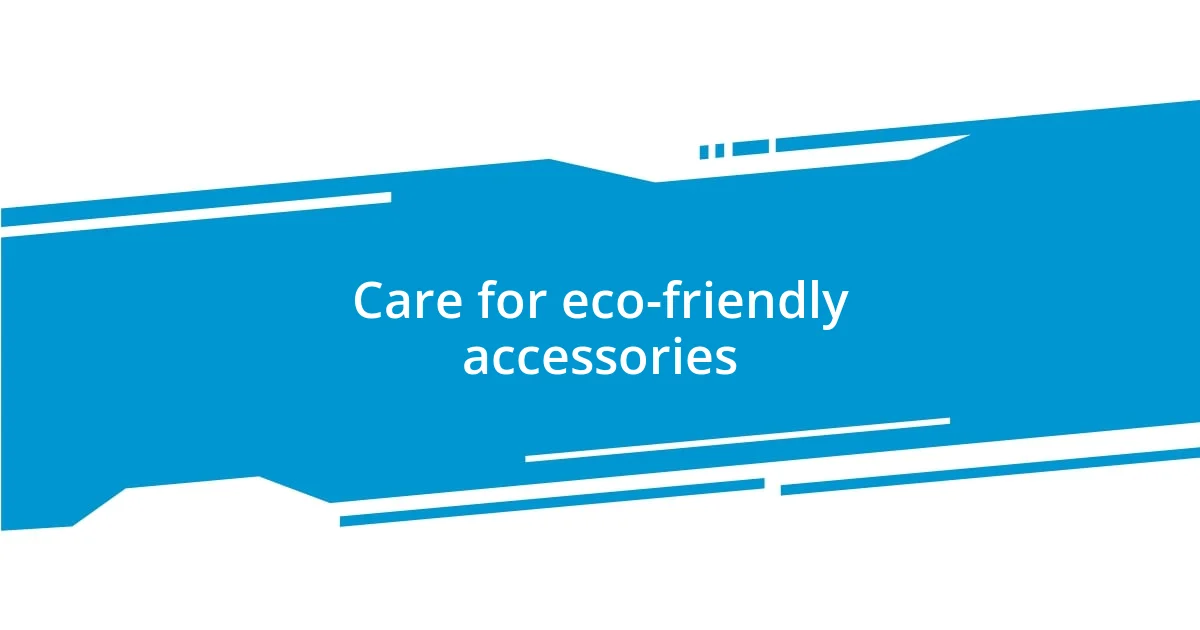
Care for eco-friendly accessories
Caring for eco-friendly accessories requires a bit of attention, but I find it rewarding. My bamboo sunglasses, for instance, need gentle cleaning with a microfiber cloth rather than harsher chemicals. Whenever I take a moment to care for them, I feel like I’m extending their life while also nurturing the planet.
I once had a lovely linen tote bag that showed signs of wear after months of use. Instead of tossing it aside, I decided to mend it. Stitching up a small tear not only gave the bag a second life but also deepened my appreciation for it. Have you ever experienced that satisfaction from reviving something you thought was done for? It’s a powerful reminder of the value of resourcefulness in our eco-friendly journey.
Another aspect that often goes overlooked is storage and maintenance. When I store my sustainable leather wallet, I keep it away from direct sunlight and moisture, as I know that these elements can affect its longevity. Did you know that proper care can help keep such accessories in shape for years? It’s a small effort that yields immense rewards in sustainability, showing respect for both the item and the environment.

